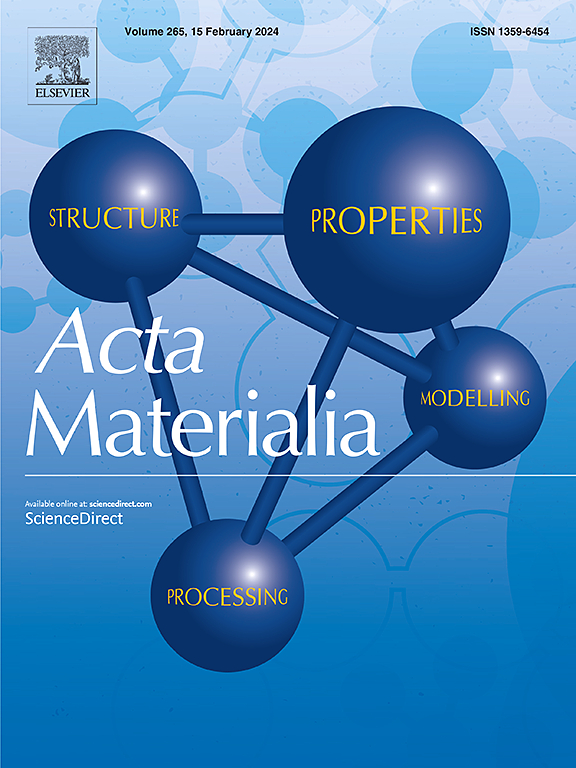Quantifying and visualizing the microscopic degrees of freedom of grain boundaries in the Wigner–Seitz cell of the displacement-shift-complete lattice
IF 8.3
1区 材料科学
Q1 MATERIALS SCIENCE, MULTIDISCIPLINARY
引用次数: 0
Abstract
We introduce a grain boundary (GB) translation vector, , to describe and quantify the domain of the microscopic degrees of freedom of GBs. It has long been recognized that for fixed macroscopic degrees of freedom of a GB there exists a large multiplicity of states characterized by different relative grain translations. More recently another degree of freedom, , the number of GB atoms, has emerged and is now recognized as an equally important component of GB structural multiplicity. In this work, we show that all GB microstates can be uniquely characterized by their value of , which is located within the Wigner–Seitz (WS) cell of the Displacement-Shift-Complete lattice (DSCL) of the GB. The GB translation vector captures information about both the translation state and the number of GB atoms. We show that the density of GB microstates inside the WS cell of the DSCL is not uniform and can form clusters that correspond to different GB phases. The vectors connecting the centers of the clusters correspond to the Burgers vectors of GB phase junctions, which can be predicted without building the junctions. Using , we quantify GB excess shear and argue that it is defined up to a DSCL vector, which has implications for thermodynamic equilibrium conditions. Additionally, this work generalizes the definition of the number of GB atoms to asymmetric boundaries.

求助全文
约1分钟内获得全文
求助全文
来源期刊

Acta Materialia
工程技术-材料科学:综合
CiteScore
16.10
自引率
8.50%
发文量
801
审稿时长
53 days
期刊介绍:
Acta Materialia serves as a platform for publishing full-length, original papers and commissioned overviews that contribute to a profound understanding of the correlation between the processing, structure, and properties of inorganic materials. The journal seeks papers with high impact potential or those that significantly propel the field forward. The scope includes the atomic and molecular arrangements, chemical and electronic structures, and microstructure of materials, focusing on their mechanical or functional behavior across all length scales, including nanostructures.
 求助内容:
求助内容: 应助结果提醒方式:
应助结果提醒方式:


